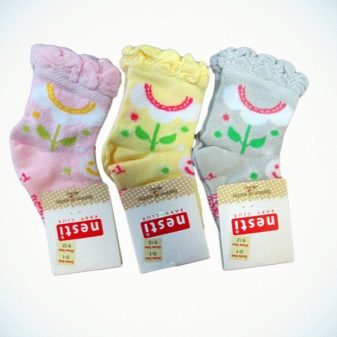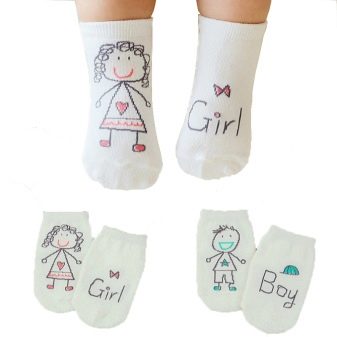Socks for newborns
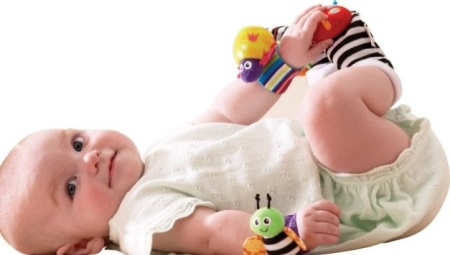
The birth of a baby is considered the most exciting and long-awaited event. He needs love, care and attention. Every infant needs clothing that maintains body warmth. An important item of infant wardrobe is socks for newborns.
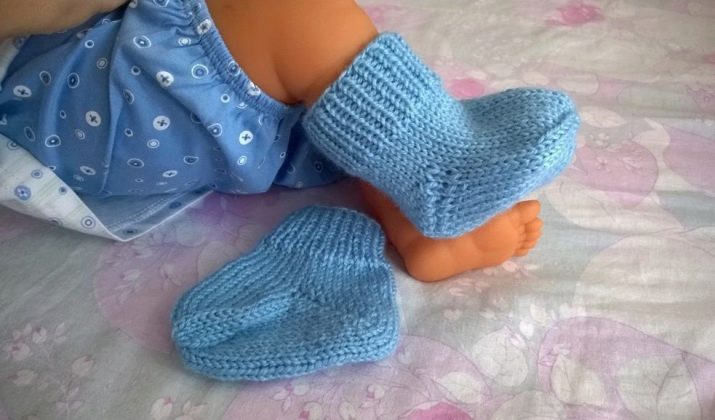
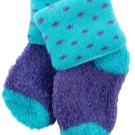
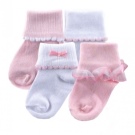
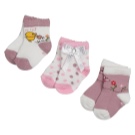
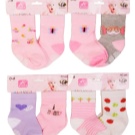
Peculiarities
- Socks for the smallest babies are essential from birth. This is due to the fact that for the first few months of a baby's life, his thermoregulation is impaired. Feet can be cold even in summer at a temperature of +20 degrees and in the shade.
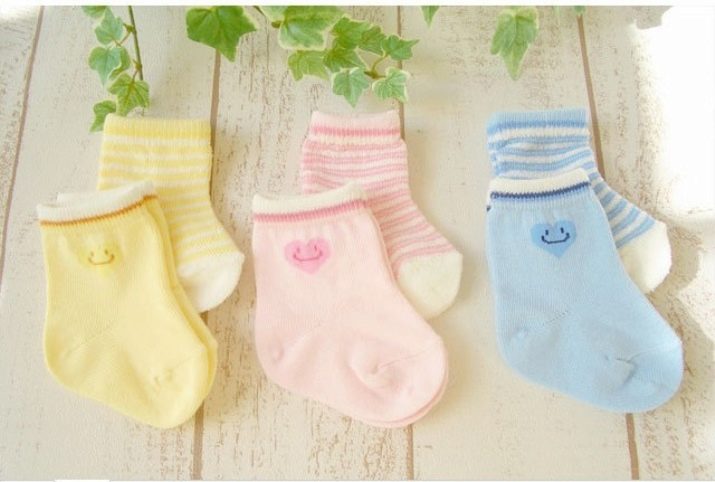
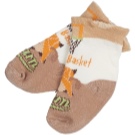
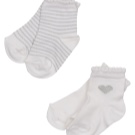
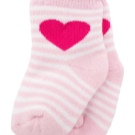
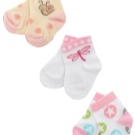
- They are needed at any time of the year, regardless of the month in which the child was born. Products for cold days are denser and differ in the material used.
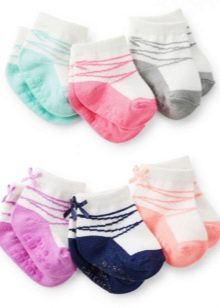

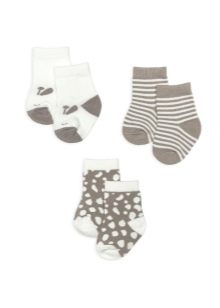
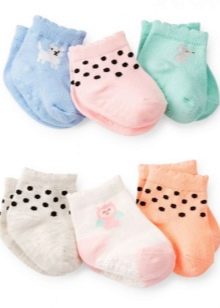
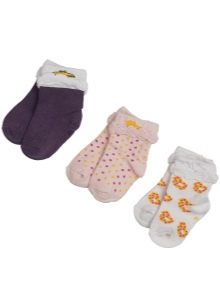
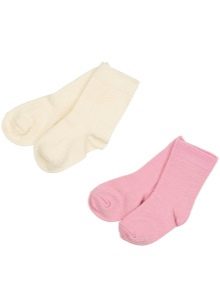
- Socks for newborns are made of natural fibers, which provide a favorable microclimate for children's feet. They perfectly let the air through, allowing the legs to "breathe" and not sweat. The products do not cause allergies, do not irritate the baby's delicate skin.
- They are essential during medical procedures or air baths.
- Thanks to the huge selection and design, it is not difficult to find good quality socks for your baby.

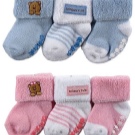
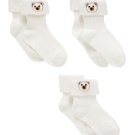
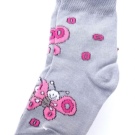

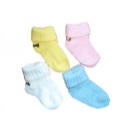
How to choose socks for your baby?
When choosing socks, you should pay attention to the material from which they are made. Thin summer options are made of cotton, jersey. Warm products for the cold season are insulated with a bike.
Baby's skin is very delicate and sensitive. Avoid socks containing synthetic fibers.
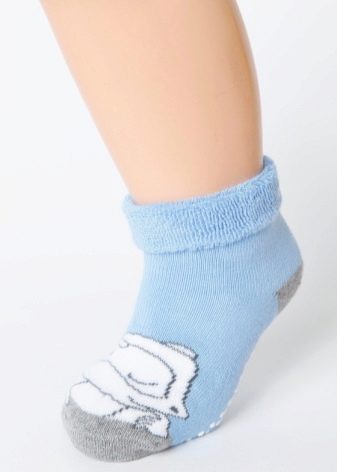
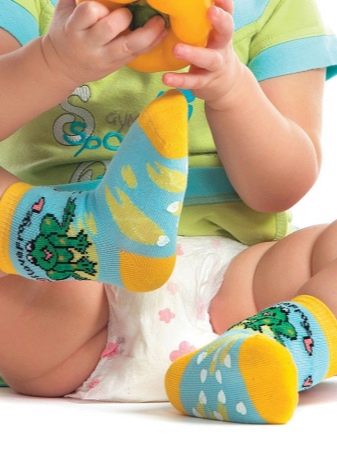
Do not wear woolen socks on the legs of a newborn. They can tingle the skin or cause allergies. If necessary, it is best to wear them over cotton models.
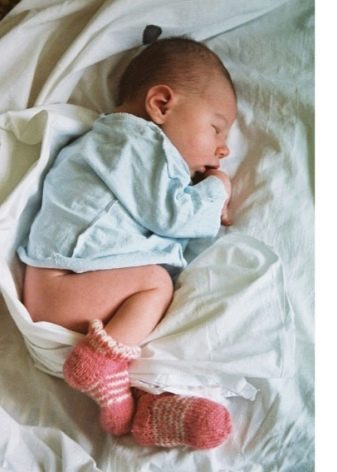
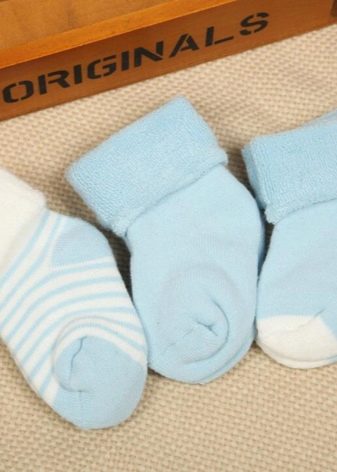
When choosing the perfect socks, don't forget about the elastic. It can squeeze the delicate baby skin, and without it, socks will fall off.Models with "European elastic" are considered an excellent option. It keeps well on its legs and does not interfere with blood circulation.
It is important to purchase socks by size. If it is too loose, the legs will not get warm, the tight option can squeeze the fingers and cause discomfort.
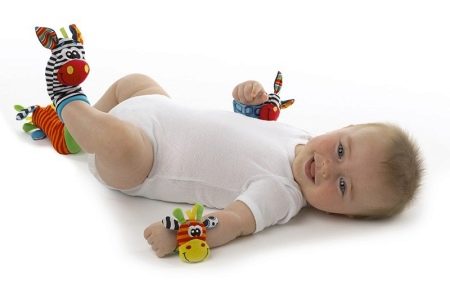
It is better to buy accessories from trusted manufacturers' stores. In this case, it will not be superfluous to look at the composition.

Such products should not have a lot of decor. Better if they are functional without bulky frills. The socks will be washed every day, so decorative elements can come off, crumble and come apart. In addition to losing its attractiveness, the decor can harm the baby. It is important to exclude rubberized models and styles with beads, toys and other massive decor.
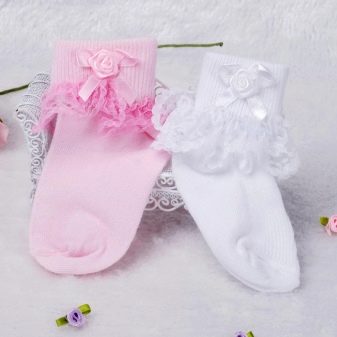
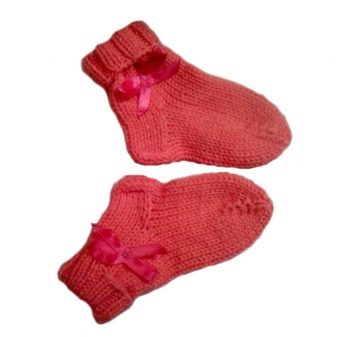
You shouldn't buy socks of poisonous shades. These dyes can cause contact allergies.
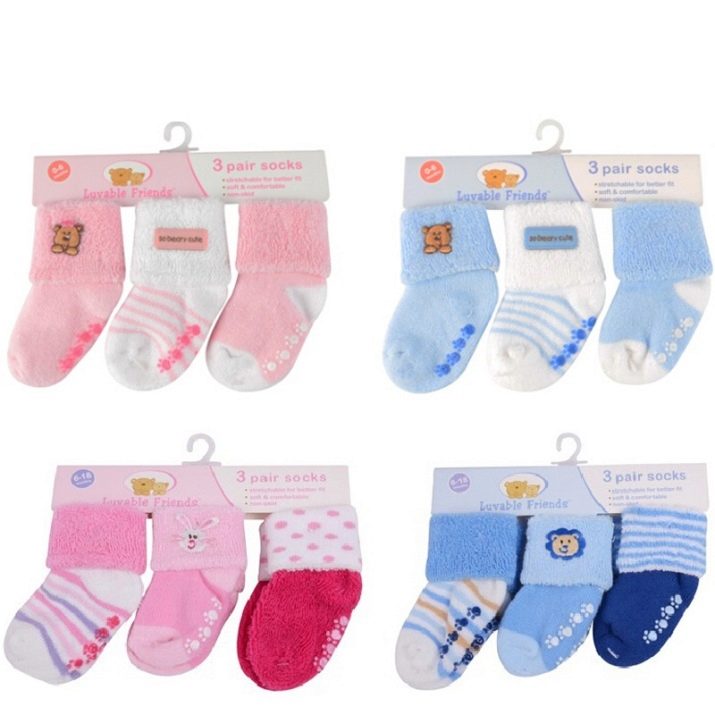
Quantity
Despite the fact that babies do not walk and grow quickly, one pair of socks will not be enough. There should be at least 2-4 pairs of children's socks in the wardrobe. They should have time to dry after washing and always be at hand. You can prudently acquire a pair one size larger, so as not to be faced with a sudden "surprise" that the baby has grown up.
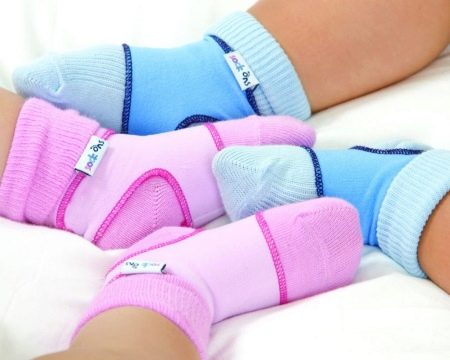
The arsenal should not have socks of the same thickness. It is important to ensure that there are different densities and warming characteristics for each weather.
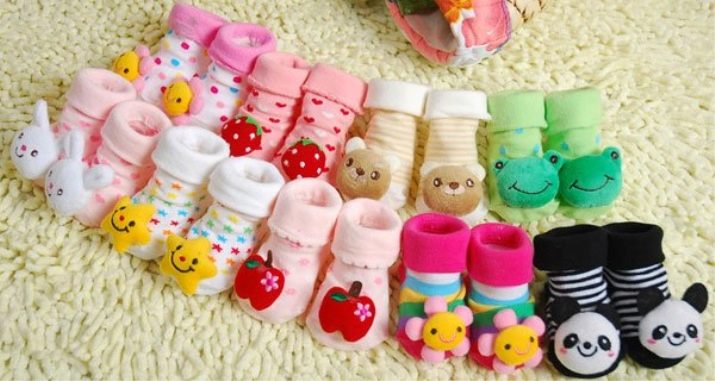
Color solutions
The choice of color usually depends on the gender of the child. For girls, they buy socks made in light pink, peach, snow-white, lilac and crimson shades. Models in diluted turquoise, gray, lemon, yellow, cream tones are no less in demand.
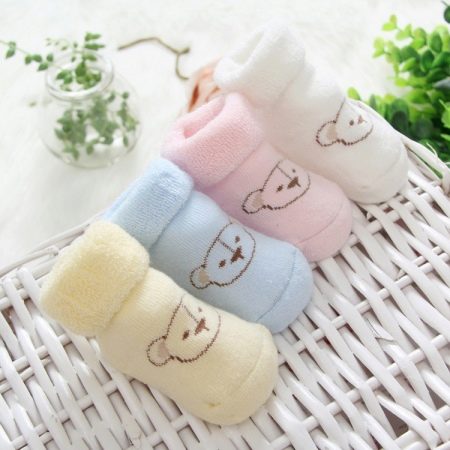
Thanks to the rich selection of products for newborns, in addition to monochromatic options, today you can buy models with a pattern. Most often these are flowers, colored peas, stripes, leaves, funny animals, hearts, fruits.
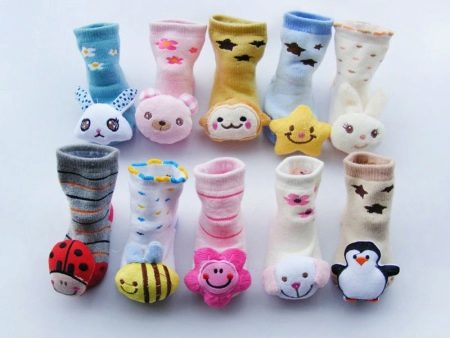
Models
Styles for the first days of life are as soft and pleasant to the touch as possible. They have a soft elastic band or cuff. Outwardly, such models resemble the lower part of simple children's tights. Usually they are made in one color and are completely devoid of decor.
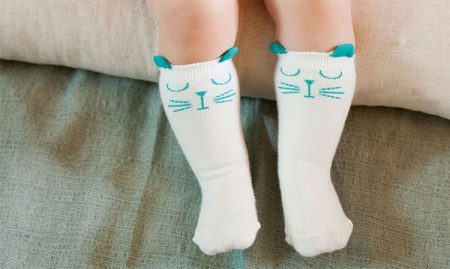
Knitted
Knitted styles are distinguished by a lapel with a thick elastic band. It can be with a simple or curly edge and is supplemented with synthetic fibers to maintain its shape. On the sides of the socks, there are sometimes tiny bows made of a thin satin ribbon. Such styles are more convenient than products without an elastic band or options with a thin elastic band tucked inward.
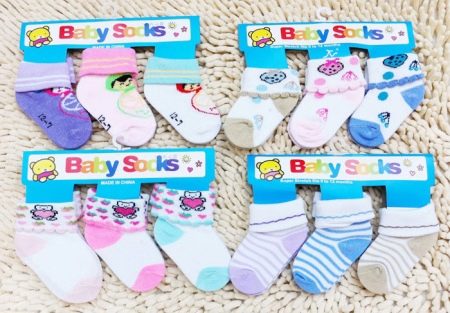
Knitted socks with a color combination look charming. The heel, toe and elastic can be made in the same tone, and the base is decorated with a print, small embroidery or applique.

Terry
The socks are very nice and comfortable. They are warmer than thin cuts and create a cozy atmosphere. Their rubber band is gentle, it does not squeeze children's legs.
Such models often have a patch with the manufacturer's logo. They must be removed to avoid scratching the baby's sensitive skin. These items are good for the summer season and cool weather.
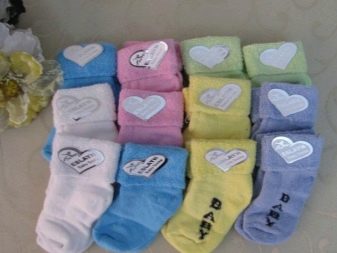
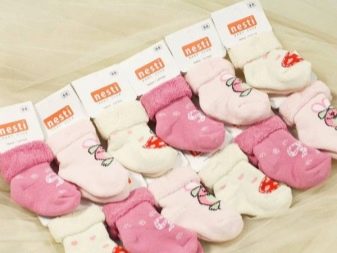
With lace
Lace options look incredibly delicate. Their disadvantage is the synthetic material of the lace insert, which can irritate delicate skin. They are good for discharge, but they are not suitable for everyday use.
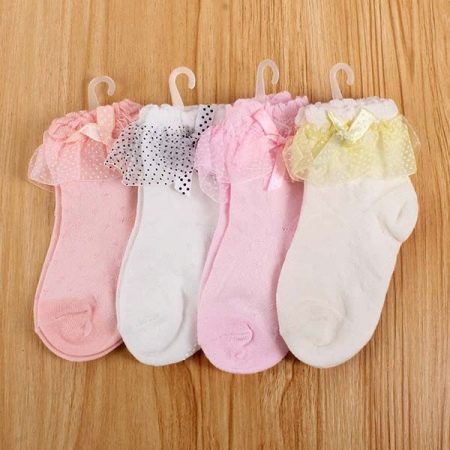
Knitted
Socks for newborns can be very different. The brands offer colorful models with different viscosity. At the same time, they look very nice and practical to use.
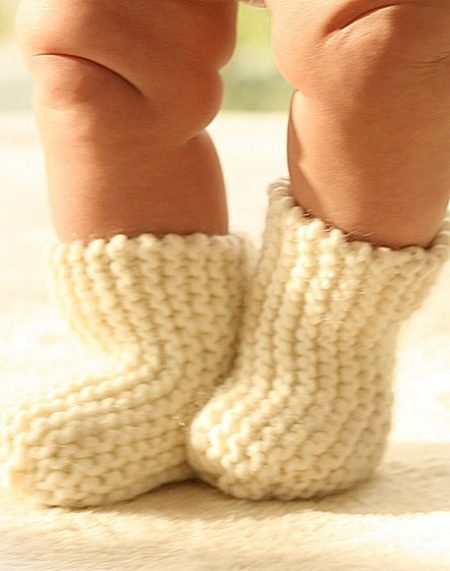
Combined
Combined socks look very unusual. They can have a shaft of smooth yarn and a bottom of terry cloth. This is especially true for the cold season, as it provides additional warmth to children's feet.
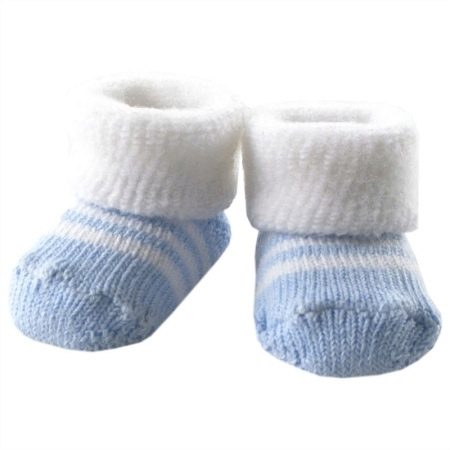
Downy
Down options are good for winter when worn on cotton models. Styles of socks-toys at this age are not needed.These products can be worn a little later, when the baby is a little older. Then they will perfectly replace the child's first shoes. Similar to home cozy slippers, they will become a bright decoration of children's clothes.
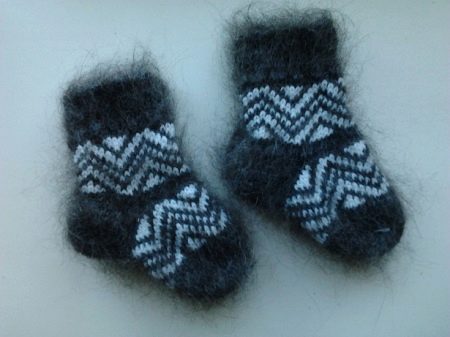
Bamboo
Bamboo socks have unique bactericidal properties. This material prevents the formation of germs and unpleasant odors. These socks are very durable, they absorb moisture well and normalize heat transfer. In summer it is not hot in them, and in winter they will reliably warm the little feet of the baby.
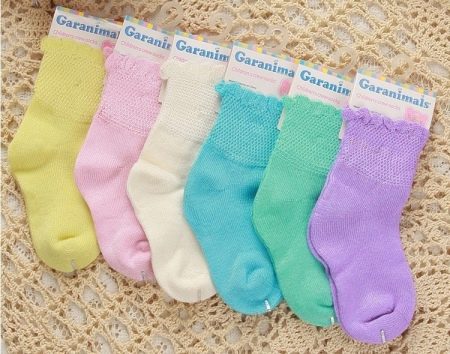
Features and benefits of DIY socks
Nothing will give you a positive outlook like taking care of your baby. Thanks to the huge selection of yarn in modern needlework stores, you can knit socks for your child, which will warm the legs well. In this case, you can choose threads of different composition, thickness and texture.
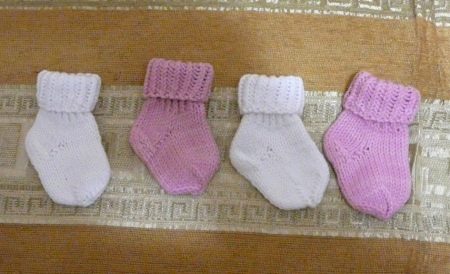
Natural cotton yarn has a number of its advantages:
- Its fibers are more durable than wool, so socks made from such yarn are more durable and practical.
- It can be clean bleached or dyed.
- A product made of such fiber is obedient in washing, pleasant to the body and perfectly breathable.
- The process of creating socks doesn't take long. This activity is exciting, and thanks to its small size, knitting a new thing for a baby will be easy and pleasant.
- One skein of thread is enough for several pairs.
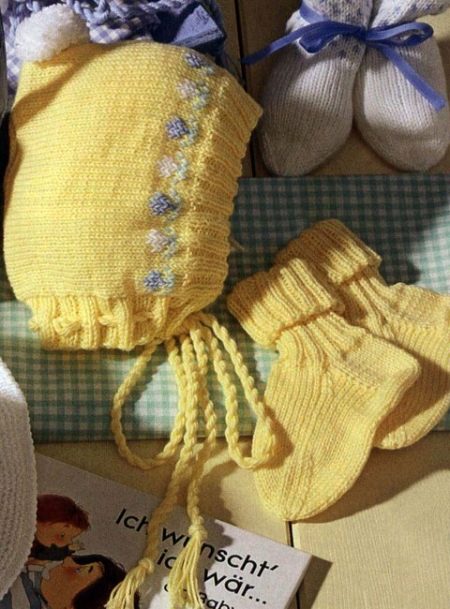
Pros and cons of wool yarn
Natural wool fiber has a number of advantages:
- Wool has warming properties;
- It normalizes blood circulation;
- Performs micromassage;
- Promotes sound sleep;
- Relieves fatigue and anxiety.

With its positive qualities, natural yarn is not suitable for everyone:
- It can irritate the skin and cause allergic reactions.
- These socks can shrink when washed.
- Pure wool is somewhat stiffer than cotton.
- It loses shape faster than jersey or cotton.
- The pattern should be simple from the front loops. The embossed pattern can squeeze the delicate skin of the crumbs.

How to determine size?
When choosing the size of socks for a baby, they are guided by the length of the foot.
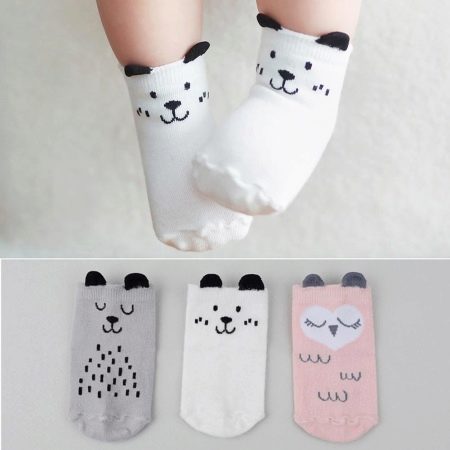
It is measured from the tip of the toe to the heel. On average, this figure is 8 cm, but you can be guided by a special size table. It indicates the size by month of birth. Usually, each size in it increases by 2 cm in even numbers.
Sometimes when you buy socks, they are marked. Indicators 0+, 0-3, 3-6 indicate the age of the baby. So, size 0+ is 8 cm, indicators 0 and 3 will be approximately 10 and 12 cm.
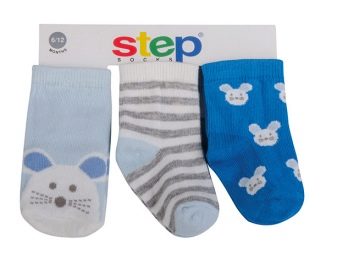
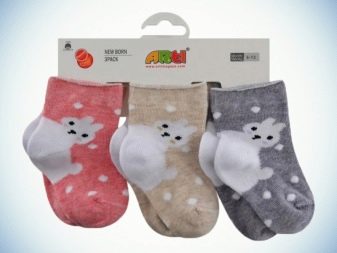
For very small crumbs, you can buy 6 cm socks. The smallest size is not always available in stores, so finding it is somewhat more difficult.
Less often, manufacturers produce products with a dimensional grid every 1 cm.
